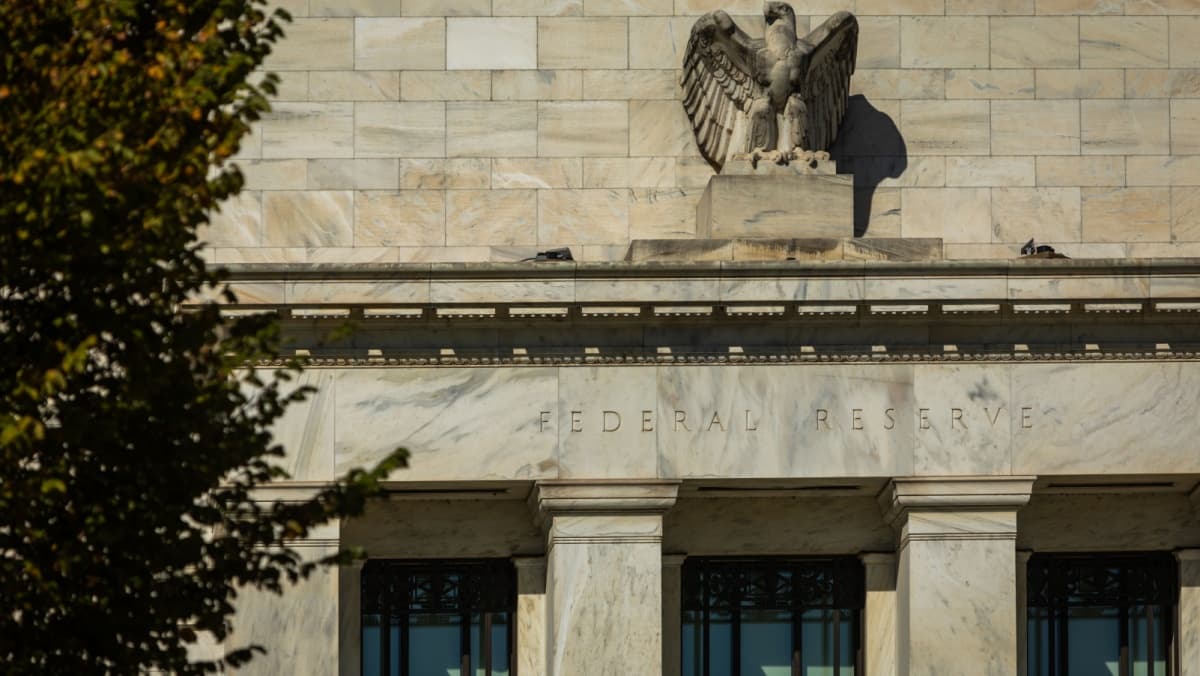Monday Apr 29 2024 12:29

9 min

Equity markets opened higher on Monday morning, picking up from Friday’s gains with more earnings in focus this week. The FTSE 100 index added around half a percent in early trade to a fresh record close to 8,200, retaining the risk-on profile that delivered a 3% gain last week.
Hong Kong was up again to extend its April rally to more than 7%. Wall Street was up Friday and for the week to pare some of its monthly losses even with Treasury yields ticking up.
Earnings in Europe are better. Here is Liberum this morning:
“With 34% of companies in the Stoxx Europe reporting, we see a marked improvement in the results to the previous earnings season. In particular, basic resources, telecom infrastructure and financials have shown surprisingly strong results so far. This, in turn, has been rewarded by better share price performance than in the US since the start of the current earnings season. While it is early days, there are clear signs that the earnings picture in Europe is improving, and European stock markets are catching up with the US.”
The Japanese yen was in freefall overnight, with USDJPY touching 160 at one stage before sharply reversing to 155 on what seems like intervention by the relevant authorities.
The Bank of Japan’s dovishness in keeping rates unchanged late last week was an open invitation for Japanese yen sellers and the pace quickened as Asian markets reopened late last night; though notably Japan is shut for a holiday.
The authorities have been reluctant to use their dry powder against the tide of rising US bond yields — but this has the look and feel of a yen intervention.
At the time of writing at 12:00 GMT, USDJPY was trading around the 155.88 mark, with the Japanese yen appearing to push back against the U.S. dollar.
Fears that US inflation will remain too high for too long, and keep the Fed tighter for longer, didn’t have much effect on stocks: the S&P 500 index rallied 2.7% for its best week since November. Part of that seems to be down to a handful of megacap tech stocks. We know all about the way in which the index relies on a just a few companies. But what should we make of the data?
Growth slowed more than expected, but inflation was hotter than forecast. GDP expanded 1.6% in the first quarter, well below the 2.4% anticipated while core PCE inflation accelerated to 3.7% from 2.0%. The word ‘stagflation’ has been bandied about a lot since – compared to peers it hardly seems fair. But the US is supposed to be in the peak of health; running a 6% budget deficit and adding $1tn in debt every 100 days is delivering diminishing returns, however.
For a view on the whole debt debasement trade idea check David Zervos of Jefferies for a slightly different take:
“There is a pervasive notion across most swaths of the investment community that reckless US fiscal policy has been an important contributor to the highly unpleasant inflation experience of the last 3 years. However, when comparing the headline consumer prices for a battery of developed countries, one finds that the inflationary shock was fairly consistent, suggesting global forces were the driver of this shock.
In addition, the demand-side fiscal stimulus country-specific policies varied significantly in terms of size, especially compared to the massive fiscal response in the US. In addition, the apparent breakdown in the correlation between LT Treasury yields and gold is likely being driven by geopolitical tensions and not the idea that fiscal excess is driving a lack of confidence in USTs and an escape to the safety of gold.”

With inflation remaining sticky, the main focus this week is set to be the U.S. Federal Reserve meeting.
The Fed is still expected to stand pat on rates next week at the May meeting. In that sense, nothing has much changed since its meeting in March. But in every other way, things have become a lot more uncertain. Running up to yesterday’s report the market had jumped the shark and started to price in a potential hike as the next move by the Fed. Now rate cuts bets have been pushed further out. Markets see virtually no chance of a change in rates, with the fed funds rate to remain unchanged at 5.25-50%. It is likely they will reiterate that cuts won’t come until policymakers have “greater confidence that inflation was moving sustainably toward 2 percent”.
The question is what they make of stubborn inflation. In March Fed chair Powell looked at some hot inflation readings and was reasonably unfazed: "We don't really know if this is a bump on the road or something more. We'll to have to find out."
What is becoming clearer is that it’s not transitory. The messaging will be a lot more like it was a couple of weeks ago before the blackout period when Powell said recent inflation data indicated that “it’s likely to take longer than expected" for the FOMC to have confidence inflation is returning to 2%. As mentioned here several times, I don’t think the Fed really wants inflation back to 2% — looser policy and higher inflation is good for the debt burden. The question is one of credibility in the short term – ultimately, I believe they will move the 2% goalpost. After all, it always was a kind of arbitrary figure to land on as the target.
The market had priced around an 85% chance that the first 25bps cut would happen in June, with three 25bps cuts being delivered during 2024. The inflation element of the GDP changes a lot. If growth decelerates just as inflation accelerates, then the chances of a cut diminish a lot. And we have had three straight upside surprises from the CPI reports. Markets have trimmed bets of a cut in June to just 11% — it’s totally flipped round in the last month or so.
Options market prices were implying a 20% chance that the Federal Reserve will raise interest rates within the next 12 months — but I think that has fallen back because growth is just not strong enough. You had this narrative about the strength of the labour market and the economy, and it looks more like the employment figures are masking an economy that is maybe nowhere near as tough as we thought. A hike now would be reckless — they just need to accept inflation will be 3-4% now and be happy about it.
To sum up, higher inflation per unit of growth takes the goldilocks “soft landing” scenario off the table — the Fed will have to make a decision. It’s also a fact now that the 6% budget deficit in the US is all that is keeping the economy afloat. And the Fed will have to answer another question – why, once again, have they been taken surprise by inflation?
Ahead of the Fed there is a lot of data on Tuesday, starting with fresh PMIs from China. The manufacturing survey rose back into expansion territory for the first time since September after five straight months of contraction. It rose to 50.8, its best in a year, amid signs of a slowly building recovery in the world’s second-largest economy; although the National Bureau of Statistics warned companies are still suffering from “insufficient market demand”. The services survey expanded further as well.
Eurozone CPI inflation data for April follows, which could steady after declining to 2.4% in March from 2.6% in February. The US employment cost index will offer a guide to productivity levels, while traders may also keep an eye on the Chicago PMI, Canada GDP and the CB Consumer Confidence reports.
Today sees the latest round of German inflation data. CPI stood at +2.2% in March 2024, down from +2.5% in February and +2.9% in January.
The inflation rate in March was at its lowest level since May 2021. Falling energy prices, which declined 2.7% year-over-year in March, are favourably impacting the data. More recent PPI data also showed promise at -2.9% in March. This morning’s Spanish CPI print was in line at 3.3%.
When considering shares, indices, forex (foreign exchange) and commodities for trading and price predictions, remember that trading CFDs involves a significant degree of risk and could result in capital loss.
Past performance is not indicative of any future results. This information is provided for informative purposes only and should not be construed to be investment advice.